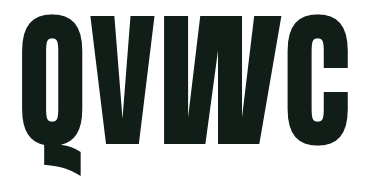Nartarsha Bamblett a Yorta Yorta, Bangerang, Kurnai, Warlpiri and Wuradjeri woman working to connect and heal the gaps
Can you tell me a little bit about yourself and the work that you do?
I'm an Indigenous and Scottish woman from the tribes of is a proud Yorta Yorta, Bangerang, Kurnai, Warlpiri and Wuradjeri woman. I now live in Melbourne and I get to live, work, play, and raise my son here on Country. The work that I do and what I stand for is ultimately about healing ourselves through the connection to ourselves, culture, and Country. I create sacred safe spaces to learn and unlearn, which creates unity internally and externally with all peoples from all walks of life.
I get to do this while sharing my story and allowing other people to share stories, express themselves, be seen and heard for all that they are and noticed for empowerment and inspiration of Indigenous people, of women and youth, and just bridging and being the bridge between the gaps.
Image courtesy of the Shepparton News
What pulled you into this role of being a bridge?
I never thought that I'd be doing what I'm doing. I wanted to avoid going down the cultural education path. I was leading these conversations about strengthening my mind, my body, my heart, and my connection – and this had led to different pathways. I’d been doing this for about seven years, and then I started using dance and expression through music as a way to share my story. And the story got bigger, and then other people started sharing their stories. Now I get to create these circles and events that are spaces of healing.
Why is the overlap between dance and healing an important space for you?
Dancing isn't a performance – it’s also a form of storytelling. I do that in a way with my body which allows music. Songlines are a form of expression, and allowing my body to move through the emotions that I feel at any given time. It's more just about movement and expression and connection to music. Everybody can connect to that. No matter your culture, your religion, your beliefs, your family backgrounds, your age, your ability, your physical ability. It's a way where we can embody experience or a feeling at any given time. I've found healing in that for myself, that if there was one thing that I could do to control what was going on with my body, I could control the way I moved my body. That was healing for me. And I just wanted to show other people that they could do the same and make them feel alive and connected to themselves in a way of a healing.
In your workshop outline, you talk about the process of growing through learning and unlearning. I wanted to ask what that process of unlearning looks like for you?
I've heard that everything that you learn, you have the ability to unlearn. And unlearning is breaking the cycles of the things that we've been stuck in, and our conditioning and programming. It’s the change or transformation that we get to receive within information through conversation. This is a part of the unlearning that we get to do that in my spaces, where it's safe and we get to do that and we hold ourselves and show up and not know what we don't know.
The safe space that’s created is really big, because the learning in our culture has been one that's very sacred. The safety for somebody to come into this space, and then let go, and take the things that serve them moving forward after they leave my space. And I'm not here to shame or blame or guilt anybody for what they've experienced or lived or know and don't know in their life. It's a space of safe learning.
How has dance been drawn into your work, too?
Dance is a way where we get to change our physiology. It also allows us to go on a storytelling journey without speaking or without the words. And we just allow our bodies to guide us. Dancing and moving my body has done that for me, where we embody different animals and different feelings and emotions. We just allow that to travel and move for us. And that's what dancing does. It brings and connects people together. Dancing is all about sharing. I share myself, and show them the storytelling with my body and then I invite them to join me. And people go through their own experience or journey when they see me dance. It’s just a beautiful offering to inviting them into the space, and they just do the rest.
What do you see as some of the biggest issues that currently face women and non-binary people in Victoria?
One issue is how women's spaces that are for all people who identify with the feminine. That they're okay to be seen, and we're not here to discriminate against gender, colour, or race. And I'm looking to be exposed to all different people, because it teaches me and widens my mindset – and it also means I can show up, and support, and engage, and connect, and communicate with all people. I want to celebrate the uniqueness in all of our differences as well, because that point of difference is what makes us all unique.
Interview Jessamy Gleeson


